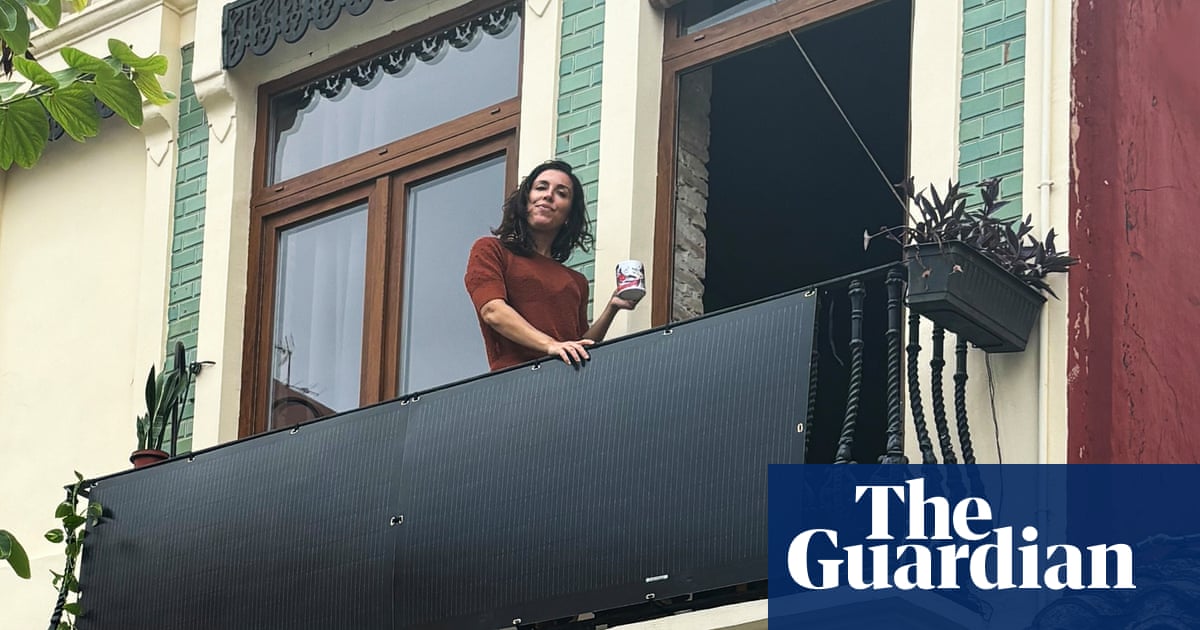Those living in flats or rented homes in the UK could soon plug in their own “balcony solar panels” to save on theirenergy billsunder plans set out in the government’s solar power strategy.
The proposals could mean that British households that are unable to install rooftop solar panels will soon join millions of people across Europe who generate their own electricity with “plug-in” panels.
These panels, found on balconies across Spain and Germany, can be plugged directly into a home’s power socket to generate solar electricity for the household.
The DIY panels are already fittedto about 1.5m balconies in Germany, where they are known asBalkonkraftwerk(balcony power plant). They typically save households about 30% on their energy bills and cost between €400-800, with no installation fees required, meaning they pay for themselves within six years.
There is also growing interest in balcony solar across Spain, Italy, Poland and in France. But in the UK, regulations do not currently allow plug-in solar, meaning bill payers in flats or rented homes are often blocked from benefiting from cheap solar power, while others face hurdles due to the relatively high upfront cost of installing traditional rooftop solar systems.
Michael Shanks, the energy minister, said: “Through solar, we are rolling out the quickest to build and one of the cheapest forms of energy for families to start saving hundreds on their energy bills, all while helping tackle the climate crisis.”
The government has promised to consult on the plans to bring balcony solar power from the continent to Britain as part of a new roadmap towards tripling the UK’s solar power capacity, published on Monday.
Ministers are also considering the potential to install more rooftop solaron the canopies of large outdoor car portsand believe there is significant scope to install solar panels on warehouse and factory roofs.
Just 20% of the UK’s biggest warehouses could provide up to 15 gigawatts of solar capacity – or half the planned growth by the end of the decade, according to the government’s clean power plan.
The plans to back rooftop solar are likely to find strong support from consumer groups and local community campaigners concerned about the impact of the government’s ambitious targets for Britain’s countryside and farmland.
The government has promised that its solar ambitions will require less than half a percent of the UK’s total land.
Ed Miliband, the energy secretary, hopes to grow the capacity of the UK’s solar farms from 18GW today to between 45 and 47GW by the end of the decade.
Sign up toBusiness Today
Get set for the working day – we'll point you to all the business news and analysis you need every morning
after newsletter promotion
He has already approved a string of major solar farms across the Midlands since the Labour party came to power last year, including the largest solar farm in the UK at the old Cottam coal plant site on the borders of Nottinghamshire and Lincolnshire.
The goal set out in the roadmap is slightly lower than the Labour party’s election manifesto pledge to triple the UK’s solar capacity to 50GW by 2030, but the strategy has suggested that the UK may be able to overshoot the target by up to 10GW if rooftop solar panels are included in the tally.
The government has promised that families could save about £500 a year on their energy bills by installing rooftop solar panels as part of the government’s solar strategy, which could support up to 35,000 jobs.
Chris Stark, who leads the government’s clean power “mission control” unit, said the “once in a generation increase” in solar power would “only be possible with a mission-focus” on working in partnership with the industry and reforming the queue of solar projects waiting to join the grid.
